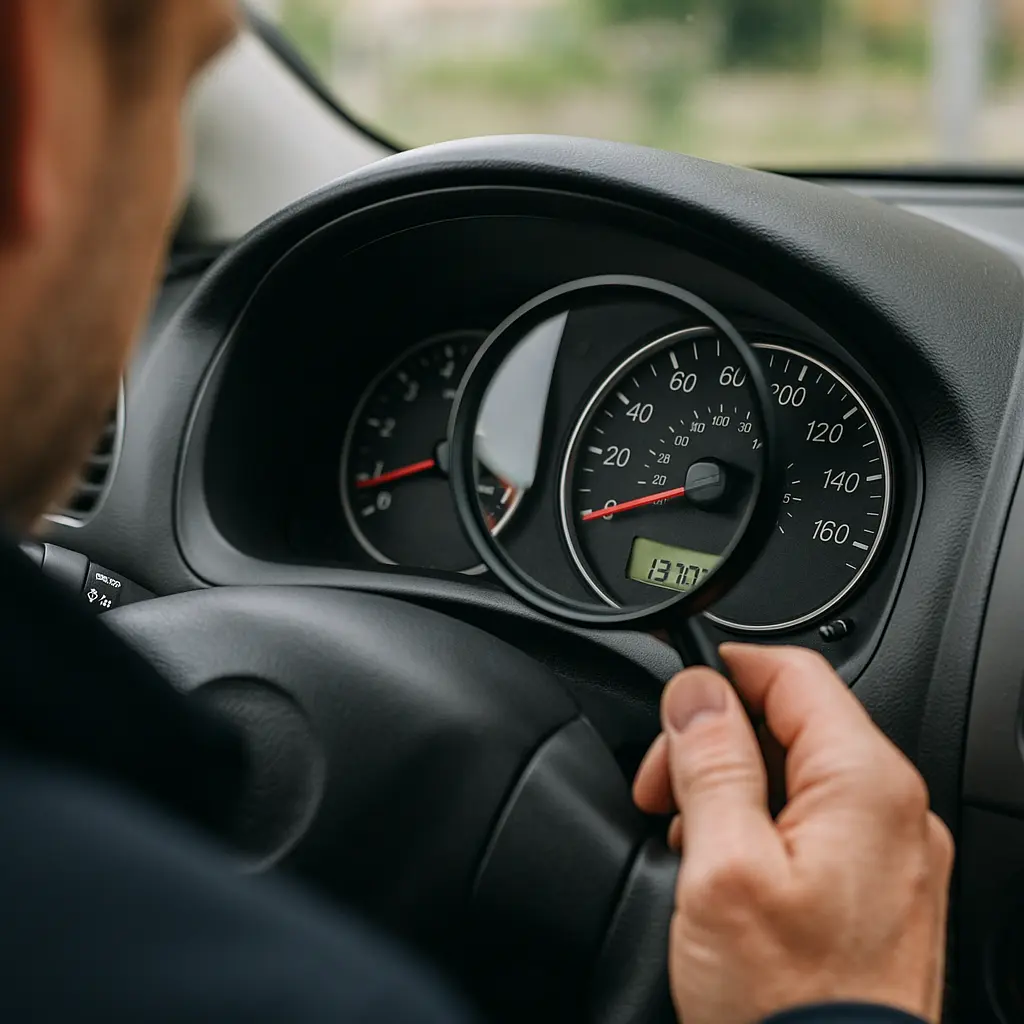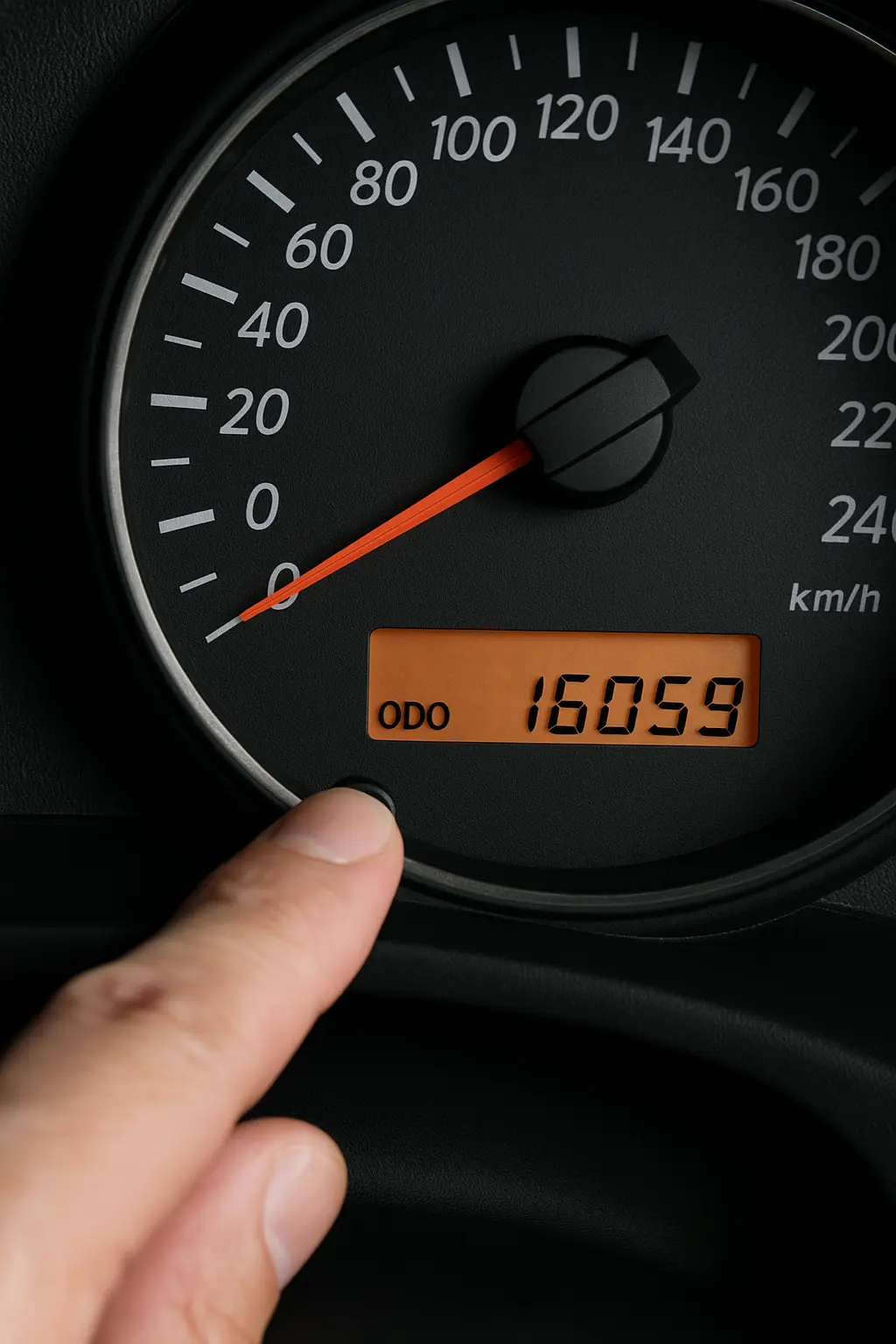How to Spot Odometer Fraud in Used Cars – 2025 Guide
Buying a used car in Australia can be a smart financial decision—but only if you're getting what you pay for. One of the most deceptive and damaging scams in the used vehicle market is odometer fraud, often referred to as “odometer rollback.” This tactic makes a car seem less used—and more valuable—than it actually is.
In this detailed 2025 guide, we’ll show you how to spot odometer fraud, explain how mileage tampering works, and offer expert tips to help you avoid getting ripped off.

🚘 What Is Odometer Fraud?
Odometer fraud involves altering the mileage reading on a vehicle to make it appear that the car has travelled less than it actually has. This scam is carried out to inflate the car’s resale value.
Odometer tampering can happen in both digital and analog cars, and while modern vehicles have more complex systems, scammers have also gotten more sophisticated.
Why It Matters
Inaccurate value: Cars with lower kilometres are worth more.
Unexpected repairs: High-mileage vehicles often need more maintenance.
Safety risk: Worn parts might go unnoticed due to misleading mileage.
Insurance complications: Fraudulent mileage can affect claim approvals.
🔍 Common Methods of Odometer Rollback
1. Digital Odometer Tampering
Modern cars with digital displays can be hacked with software tools that reset the mileage. Devices bought online can be plugged into a vehicle’s OBD-II port to roll back the numbers.
2. Analog Rollbacks
Older vehicles with mechanical odometers can have the dials physically turned back—a practice more common in the 1990s and early 2000s.
3. Cluster Swapping
Some scammers replace the instrument cluster entirely with one from a similar car with lower mileage.
4. ECU Modification
In rare but serious cases, fraudsters may alter the data in the car’s engine control unit (ECU), especially in luxury or high-tech cars.
📉 Statistics: Odometer Fraud in Australia
Odometer fraud is not just a foreign issue—it’s a real concern across Australia.
According to various consumer reports, up to 1 in 20 used cars sold in Australia may have tampered odometers.
The Australian Competition and Consumer Commission (ACCC) receives dozens of complaints annually.
With the increasing import of second-hand cars, especially grey imports, the issue is becoming harder to detect.
🚨 Red Flags to Watch for When Buying a Used Car
To protect yourself, be on the lookout for the following warning signs:
1. Unusual Wear and Tear
Worn steering wheel, gear shifter, or pedals but low odometer reading? Something’s off.
Sagging driver’s seat or faded upholstery inconsistent with claimed mileage.
2. Discrepancies in Service Records
Incomplete service history or mileage gaps.
Handwritten logs instead of printed invoices.
Sudden drop in kilometres between service intervals.
3. Car History Doesn’t Match
Look for mismatched details in the PPSR (Personal Property Securities Register) report.
Use services like CarHistory, AutoCheck, or RedBook to cross-verify.
4. Tyres and Brake Pads
Worn tyres or pads are usually expected after 40,000–60,000 km.
New tyres on a car that supposedly has under 30,000 km? Be suspicious.
5. Suspicious Seller Behaviour
Refusal to allow a pre-purchase inspection.
Pressure tactics or unwillingness to share vehicle documents.
The car has been recently registered in another state.
🛠️ How to Verify the Mileage of a Used Car in Australia
1. Check the Logbook and Service History
Genuine service records will have consistent kilometre logs, with clear dealer stamps and dates. Be wary of inconsistencies or missing pages.
2. Get a PPSR Report
The Personal Property Securities Register (PPSR) will show:
Stolen status
Write-off history
Previous odometer readings (in some cases)
Financial encumbrance (is the car under loan?)
3. Request a Pre-Purchase Inspection
An independent mechanic can spot signs of hidden wear or damage. They can also assess if the condition aligns with the stated mileage.
4. Scan the ECU
A diagnostic scan can reveal the true mileage in some cars, even if the dashboard has been altered.
5. VIN Check Against Online Records
Check VIN (Vehicle Identification Number) against various online sources to see service and registration history.
🔧 Real-Life Case Study: How Jane Dodged a Scam
Jane, a buyer from Brisbane, almost bought a 2018 Toyota Corolla advertised with 42,000 km. A quick PPSR check showed that the car had 75,000 km two years earlier when it was last serviced in Victoria. The seller had swapped the instrument cluster and tried to sell it fast.
She walked away—and later reported the incident to the Office of Fair Trading.
✅ Tips to Avoid Getting Scammed
Always inspect service history in full.
Use VIN and PPSR tools for background checks.
Don’t rush the process—scammers use urgency.
Avoid cash-only deals.
Have a trusted mechanic inspect the vehicle.
Buy from reputable dealerships where possible.
⚖️ Legal Consequences for Odometer Fraud in Australia
The penalties for odometer tampering in Australia are serious:
Fines of up to $220,000 for individuals
Fines up to $1.1 million for corporations
Possible criminal charges depending on state laws
Suspension or cancellation of motor dealer licenses
Each state has its own consumer protection body, such as:
NSW Fair Trading
VIC Consumer Affairs
QLD Office of Fair Trading
You can report suspected fraud to these agencies.
🔍 Technologies That Help Prevent Odometer Fraud
In 2025, new tools and innovations are making it harder for fraudsters to tamper with odometers:
1. Blockchain-based Service Records
Immutable logs that can't be altered manually—some car brands are adopting this globally.
2. Cloud-Connected Telematics
Brands like Tesla, Ford, and Hyundai are using cloud-based odometer syncing tied to user accounts.
3. Government & Industry Collaboration
Australia is exploring mandatory digital record-sharing between servicing centres and vehicle registries.
4. Smartphone-Based Service Apps
Apps like myToyota and MyBMW now store odometer logs and service milestones in real time.
🛡️ What to Do If You Suspect Odometer Fraud
If you’ve already purchased the vehicle and suspect fraud:
Get a professional inspection.
Contact the seller in writing and request clarification.
Report to Fair Trading or Consumer Affairs.
Seek legal advice—refunds or compensation may be possible under ACL (Australian Consumer Law).
💬 Expert Quote
"Mileage fraud is one of the oldest tricks in the book, but buyers today have better tools to protect themselves. Always verify, never assume."
– James Parker, Automotive Compliance Consultant, Sydney
📋 Checklist: Your Anti-Odometer Fraud Buying Process
✅ Inspect service records
✅ Check PPSR report
✅ Scan ECU (if possible)
✅ Get VIN match checks
✅ Conduct mechanical inspection
✅ Use trustworthy sellers
Conclusion: Stay Smart, Stay Safe
In 2025, odometer fraud remains a threat, but it’s one that can be avoided with the right steps and due diligence. Don’t let mileage manipulation catch you off guard—take advantage of the tech tools and buyer protections available to you.
Whether you're shopping for a hatchback in Sydney or a ute in Perth, a little caution goes a long way in making sure you drive off with the deal you truly deserve.
Leave a comment
Your email address will not be published. Required fields are marked *




